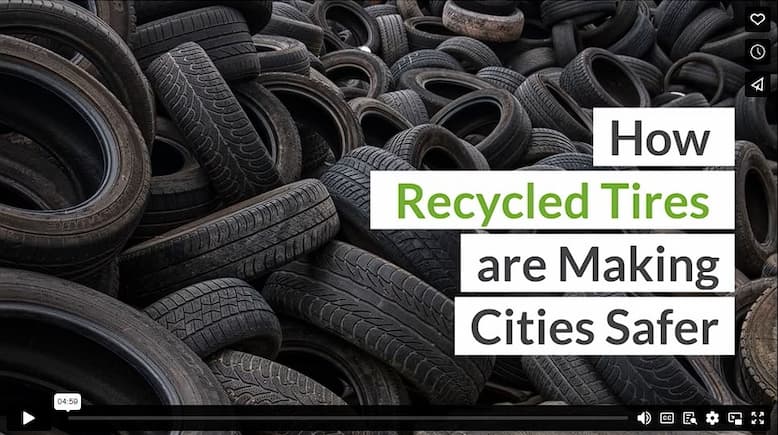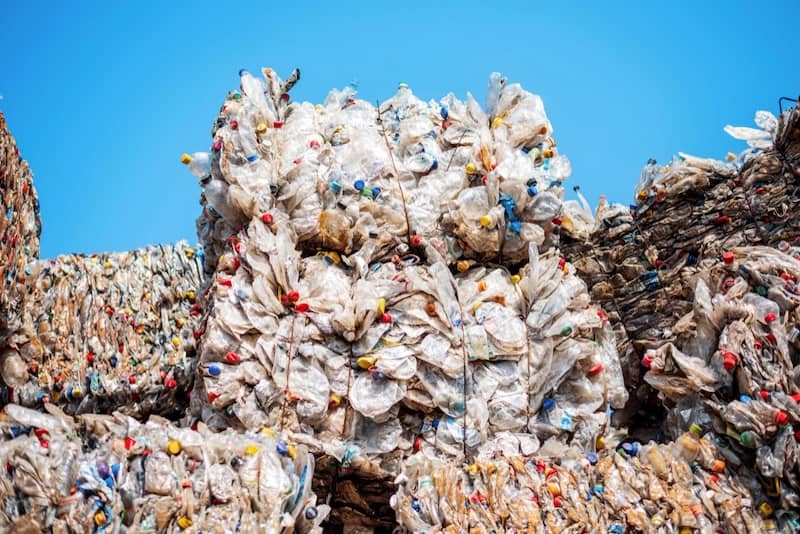End-of-life tires are helping make the asphalt of our urban landscapes safer for pedestrians and increasing the performance of new tires on automobiles and bicycles. Wondering how these environmental hazards are transformed into beneficial products? To understand how this is possible, let’s take a look at the tire recycling process.
Creating Ground Tire Rubber From End-of-Life Tires
Tire shops, trucking companies, and motorists send their worn out tires to a tire recycling plant. The plant uses large machinery to shred the tires into rough pieces of rubber. Large magnets and screening equipment separate the wire and fiber materials from the tire rubber. Finally, grinders reduce the filtered tire rubber into ground tire rubber (GTR), called crumb rubber or rubber powder.
Incorporating Ground Tire Rubber into Asphalt
Granite, sand, and crude oil are the key ingredients of traditional asphalt. At high temperatures, crude oil binds the sand and granite together. However, in recent years, the asphalt industry has found many ways to incorporate recycled tire rubber. The most common way is to add GTR to the crude oil to create a more effective asphalt binder. This modified construction material known as rubberized asphalt is approximately 15% ground tire rubber.
Asphalt can crack when exposed to extreme temperatures, but incorporating rubber powder into asphalt creates superior durability. The rubber allows the asphalt to shrink and expand without cracking. Asphalt innovators continue to experiment with adding more recycled tire rubber to asphalt in the hope of creating even more elastic surfaces.
Cushioning Falls
The hard truth is asphalt is dangerous, and it’s dangerous because it’s hard. The World Health Organization reports ‘falling’ as the number two cause of accidental death. Cliffs and construction work might seem like the main culprits here, but in fact, most fatal falls occur on road surfaces. These falls, particularly common in people over 60 years old, may transpire from simply losing balance while walking along the street.
Adding recycled tire rubber to asphalt gives the material greater elasticity, meaning it is more “bouncy.” This elasticity in pedestrian pavement has the potential to mitigate countless injuries and save many lives. Bicycles crashes, motor accidents, and tripping incidents will result in fewer injuries when individuals come in contact with the more forgiving surface.
Increasing Stopping Ability
Herrman and Herrman cite investigations that indicate “one out of every four traffic accident deaths and 445,000 injuries each year are the result of crashes in some type of inclement weather.” Hydroplaning occurs when roads are wet, and a car starts to glide on the water rather than keeping traction with the pavement.
With a higher degree of recycled tire material incorporated, asphalt generates greater friction between a skidding tire and the road. The texture of rubber-modified roads effectively reduces the chance of hydroplaning. Although the degree of change is still under investigation, even a slightly stickier surface can make the difference between life and death in car collisions and near misses. A project called SaferUp is already implementing this technology by adding the higher rubber content asphalt to the street network whenever maintenance is required.
Reducing Production Emissions
Another benefit of using recycled tires in asphalt comes from the decrease in greenhouse gas emissions required to produce the road material. Since manufacturers use recycled tires, they avoid making the rubber ingredient from scratch. The more recycled tires asphalt producers use, the less energy they consume to produce asphalt.
As the ground tire rubber is mainly used to bind the granite and sand, less crude oil is required to produce asphalt. Crude oil spills devastate ecosystems and pollute waterways, so it is beneficial to rely as much as possible on recycled materials.
Longer Asphalt Lifespan
The lifespan of asphalt depends on the climate, amount of traffic, and composition of the asphalt. Sidewalks and roads crack when the asphalt is subject to extreme temperatures. As it expands and shrinks, cracks appear. The problem amplifies with water erosion and heavy traffic. Cracks and potholes encourage users to swerve and create a bumpier ride for drivers, forming more roadway hazards. Broken-up sidewalks are a tripping hazard to pedestrians and cyclists.
Adding rubber to asphalt increases elasticity allowing the asphalt to remain intact despite temperature changes and heavy traffic. Rubberized asphalt also absorbs impacts from heavy vehicles rather than breaking apart, allowing roads to last longer before needing to be repaired or replaced.
Modern tire recycling technology allows old tires to play a critical role in creating safer city landscapes. Ground tire rubber incorporated in asphalt reduces fall injuries and air pollution, while increasing a car’s braking ability and pavement lifespan. This technology makes city streets less hazardous for pedestrians, cyclists, and drivers. Recycled tire asphalt will likely become a popular paving choice for many cities.
Infographic
Worn-out tires are useless and often lie around in empty lots. But did you know that these end-of-life tires can make a significant change in the safety of urban landscapes? While they are viewed as an environmental hazard, there are ways to make beneficial products out of them. Learn about ground tire rubber and why it is added to the asphalt.

Video





